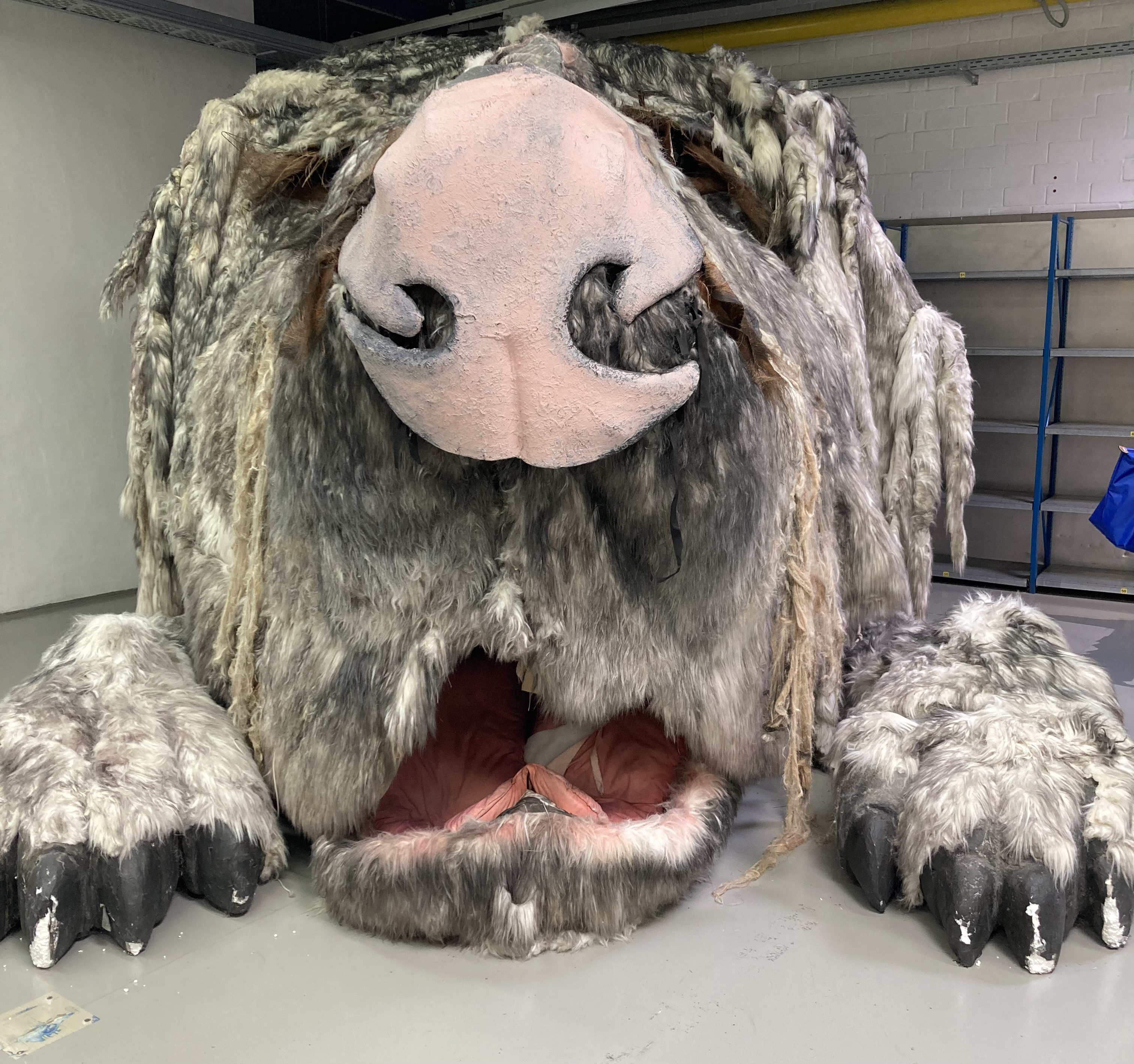The installation of a huge dog sculpture at documenta fifteen raises questions of the processes of digitising sites of cultural heritage.
Moondog was built as part of a theatre set by stage designer Stefanie Oberhoff for the Schauspielhaus Bochum. During its lifetime on the stage, Moondog was given the affectionate nickname Krümel, or ‘Crumbs’, reflecting the dog’s material deterioration. Moondog was brought to Kassel with the Initiatives for Material Cycles, which deals with the issue of recycling of material culture and which is attempting to mediate the adoption of Moondog’s physical form, as well as Moondog’s transformation into pixels.

documenta, Kassel’s five-yearly international contemporary art exhibition, put on its fifteenth show this year. documenta fifteen broke boundaries with its curatorial strategy. There was no head curator; rather, curatoring team ruangrupa, an Indonesian artists’ collective, created communities by inviting artists to exhibit and encouraging them to invite artists whose work resonated with theirs, thereby establishing networks of shared artistic and activist knowledge. ruangrupa operated with the Indonesian concept of lumbung in mind. Lumbung is the name for a communal rice barn, which serves as a metonym for the wider practice of resource building and sharing. ruangrupa have committed to applying lumbung to the creation of new models of sustainable management and activism. Lumbung recognises that art acts as if it is alive within a society and therefore has social responsibilities.
To return to the issue of Moondog, whom the Schauspielhaus can no longer house, new technologies of digitising material culture could provide a solution. Moondog is being digitised and released as a public resource: a programmed lumbung. Often the use of digitised cultural heritage is to aide in the event of reconstruction, such as scans of the Notre Dame cathedral being used in its repairs. In the case of Moondog, however, it is hoped that the digital Moondog will not be passive in its role and will instead activate new ideas, undergoing a process of creative recycling. The organisers have explicitly stated that the Moondog will be free for creative use – a kind of digital commons.
This view of the internet as a digital commons that could enable fairer sharing of knowledge and more equitable outcomes is a hopeful one. However, many critics have drawn attention to the incorporation of pre-existing power imbalances into the very structure of technology networks, such as paywalls and the selling of extracted data. In the case of material culture, or art, many museums uphold their ‘paywall’ and have refused to release digital scans of their collections to the public. After years of legal back and forth, a digital 3-D model of the bust of Nefertiti, held in Germany’s Neues Museum (against Egypt’s repatriation claim), was released to the public, with the conditions that the museum has copyright over the scans, and any material made from the scans must be available for reuse by others. How can a museum in a country with a dubiously-legal claim to another country’s cultural heritage copyright even the digitised culture? Not very lumbung at all.
[…] digital platforms have emerged as a ubiquitous rentier that endeavours to insert itself into spaces, things, and interactions—especially ones that were not previously subject to rentier relations—in order to control access and capture value.
Jathan Sadowski, “The Internet of Landlords: Digital Platforms and New Mechanisms of Rentier Capitalism”
The case of Moondog’s digital transformation draws attention to the rarity of the project’s free sharing of resources. Art institutions are often afraid of losing their monopoly over material culture – the Neues Museum resisted releasing their scans of Nefertiti by claiming it ‘would threaten its commercial interests.’ Forgive my cheesy analogy, but they are blind to the fact that, like Moondog’s nickname, Crumbs, digitised culture does not reduce through use. When a crumb is divided, the product is not fractions of crumbs, but multiples instead; copyright or paywalls should not be able to repress the creatively generative effects of free access to cultural heritage.



Thank you for writing this post! I was planning to go to documents Kassel but couldn’t make it eventually, so only navigated it virtually. Digital commons indeed is a new ways to approach works like moondogs or other cultural heritage. My current internship is exactly related to this concept, we are transforming clothing patterns from certain collection in the museum digitally by inviting people to duplicate it during the events and upload it on wikimedia to share. In the process I learn a lot about copyrights or how to optimize the results
I like the sound of your internship ! it’s neat that people get to participate in the process of sharing their belongings instead of museums taking on all the agency – do you find people have a positive reaction in general ?
With your blog article, I was thinking about why and how the monetization of digital resources works.
This article reminds me of NFT, where you can buy the copyright of the digitized images and owns them. Although I worked with NFT for my work, I find it bizarre to monetize digital resources.
I mean, it is important for many artists to get paid for what they do! however, the feature of a digital platform, where you can copy and paste easily, and the concept of monetization seems often clash. I know there are so many new technologies trying to prevent the illegal use of monetized digital images though, often I find there are so many loopholes.
As you wrote in your article, in the case of a big organization/ institution that has money resources, I am also supporting the idea of opening up its digital sources without a paywall.
Here, a few questions come up: If the artist(set designer) was not having other agencies or resources of income, would it be possible for the artist to decide to open the whole source?
Often my thought on these issues gets confusing when I think about the individual artists/ or collectives who contribute to the cultural heritage or who made artwork and at the same time who have no other income other than that.